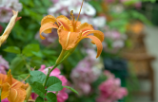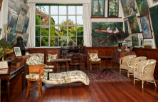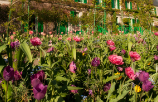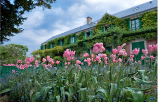Historique
January 1888: Claude Monet is intoxicated by the Mediterranean…
Encouraged by the stories of Guy de Maupassant, Claude Monet visits the Côte d’Azur early in 1888. Along with other painters like Renoir and Signac, he would bestow great works of art on the Mediterranean coast…
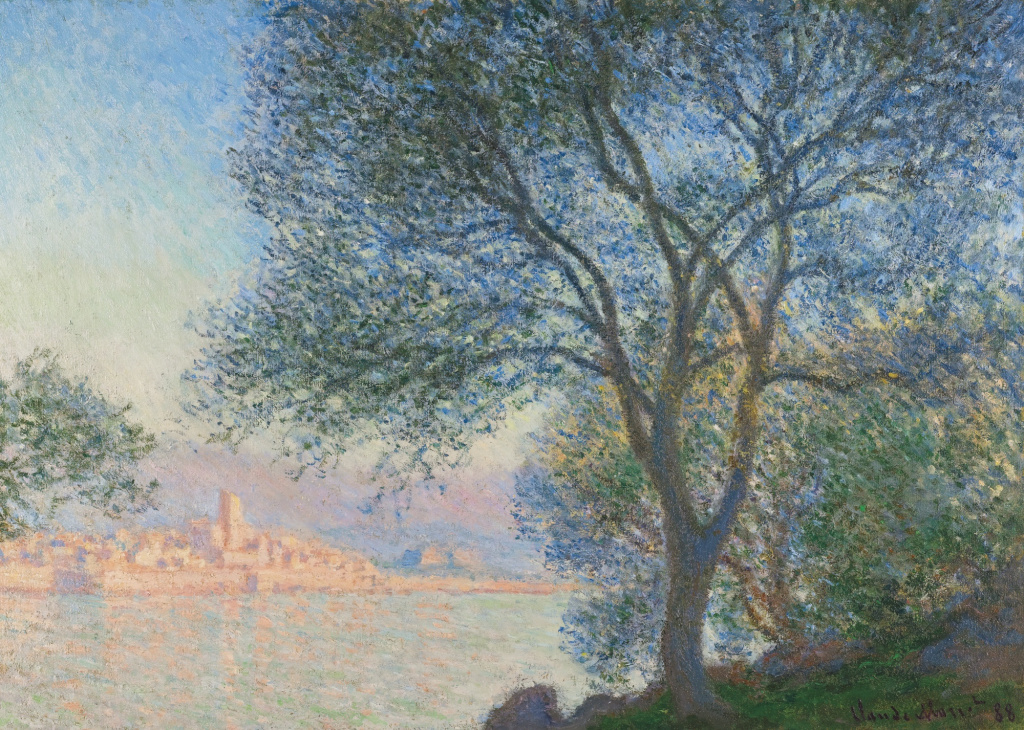
Antibes, vue de la Salis (1888), Claude Monet. Collection privée
After reaching Cassis via the night train, sleeping in Toulon and arriving at Juan-les-Pins by horse-drawn omnibus, the master impressionist finds a ride to Cap d’Antibes. With a reference from Guy de Maupassant, the artist receives a warm welcome at Château de la Pinède, a manor home which has become a sort of “painters’ retreat”. His stay there gets off to a rocky start. He is bothered by the presence of painter Henri-Joseph Harpignies and a cohort of students. And, to make matters worse, “the weather is dreadful, with torrential rain, so it is impossible to see or appreciate the area”! After a few days of exploration, Claude Monet succumbs to the charms of the Salis gardens, the Garoupe plateau (75 metres at its highest point) and the Bacon headlands. All those gorgeous features give him wonderful views of Antibes and the Alps. His gloominess gives way to enthusiasm: “I have five or six superb features to capture, and fast, so long as the weather remains as dazzling it is now. It’s magical.” He soon receives permission from the relevant military authority to paint in Antibes. “I am painting the town of Antibes, a small fortified town all golden in the sun, which stands out against beautiful blue and pink mountains and the eternally snow-capped range of the Alps”, he writes on 20 January. Focused on his work, he seeks to avoid any and all encounters that could distract him from his mission. And so, he discourages Renoir, then staying with Cézanne in Aix-en-Provence, from coming to join him. By 1 February, Claude Monet has already begun no fewer than 14 paintings. “I am struggling and fighting with the sun”, he tells his friend Rodin, “And what sun there is here! I should be painting with gold and gems. It is exquisite.”
Nonetheless, dissatisfied with his first canvases, he scrapes the paint off two of them. As he notes to Octave Mirbeau around 1 March, with his consummate gift for understatement, “It is nothing short of murder! Beware the folly of perfectionism!” Despite an encouraging letter from Theo van Gogh, begging to be the first to discover what he would be bringing back from Antibes, Claude Monet worries that he is “finished, run dry”. Frustrated by the changeable weather, his stay drags on: “I must, at any cost, fight all the way to the end. I have set myself a deadline of 15 April”, he writes to Alice. A few trips back and forth to Cannes, where he visits de Maupassant, chases away his pique, along with his bad temper. April marks the return of the sun and his confidence! “A splendid day: I had to wear my straw hat. I worked hard and well, I think!”
On 30 April, a few days before heading home to Giverny, the impressionist artist writes one last letter to Alice: “I cannot leave these paintings in this state. I absolutely must finish what is missing. I think they will be very good, or else I am kidding myself and am going mad.” This is Monet as we know him well, a connoisseur of hyperbole!



